| Page Created |
| April 2nd, 2023 |
| Last Updated |
| April 4th, 2023 |
| Opposing Parties |
| Allied Biographies Axis Biographies |
| Otto Skorzeny |
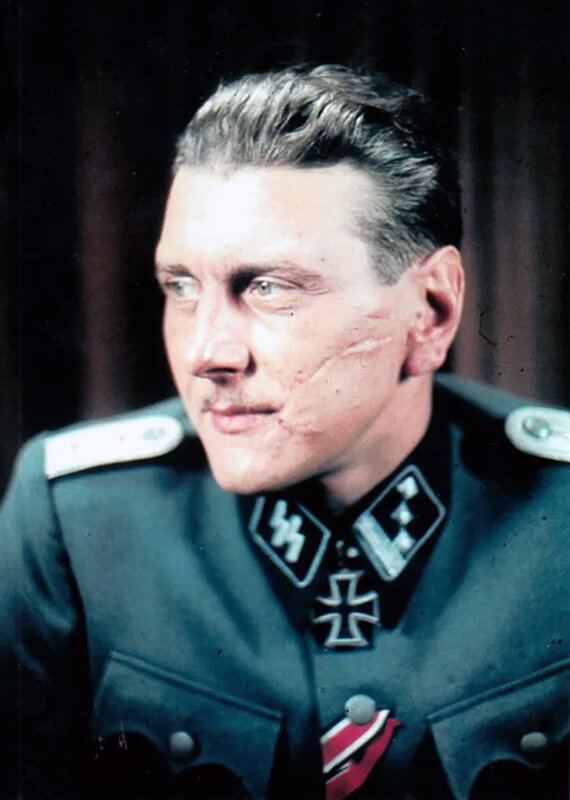 |
| Leibstandarte SS Adolf Hitler (mot) |
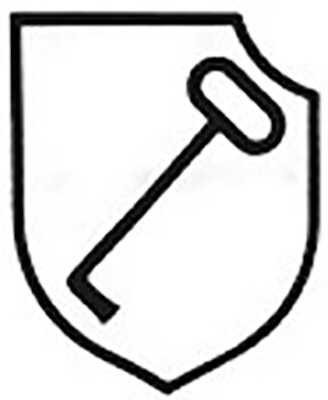 |
| SS-Division (mot) Reich |
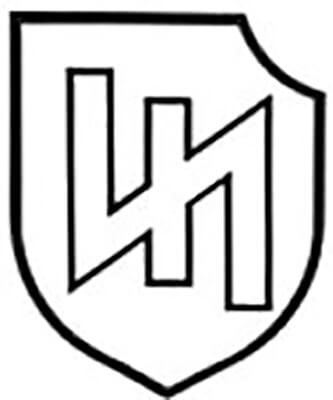 |
| SS-Panzergrenadier-Division Totenkopf |
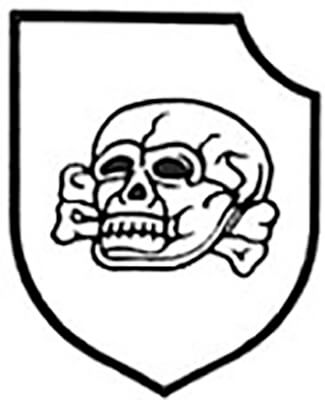 |
| Sonderverband z.b.V. Friedenthal |
 |
| SS-Jäger-Bataillon 502 |
 |
| Biography |
If you wany to write a biography about Otto Skorzeny his own memoires. From what we know now is that Skorzeny exaggerated his exploits in a lot of ways. As most people who worked with him agree that he was an extraordinary soldier. Therefore, we should take the things we read on internet about Otto Skorzeny lightly. Mainly because a lot of the fact that this information is based on his own biography.
Otto Skorzeny (1908-1975) was an Austrian-born officer in the Waffen-SS. He is also one of the most prominent special forces operatives of the Axis powers during World War II. Skorzeny gains notoriety for his participation in daring operations, including the rescue of Italian dictator Benito Mussolini and the kidnapping of Hungarian leader Miklós Horthy. Read the exciting biography of Otto Skorzeny here.
Born on June 12th, 1908, in Vienna, Austria, Skorzeny is the son of a civil engineer. During his teenage years, he expresses dissatisfaction with the austere lifestyle his family is living. His father, however, believes it is beneficial for him to not get too comfortable with luxury. In addition to his native Language German, Skorzeny also learns to speak French and English.
Pre-War life
While studying at the Technical University of Vienna, Skorzeny becomes s member of a German-national Burschenschaft and is known for his skill in fencing. He participates in fifteen personal combats. The tenth combat results in his famous Schmiss (German for “smite” or “hit”) scar on his cheek. He leaves University without completing his degree.
In May 1932, Skorzeny joins the Austrian Nazi organisation. In February 1934, he eventually becomes a member of the Austrian branch of the Nazi Sturmabteilung (SA).
Skorzeny is known for his commanding voice, strong sense of duty, and energetic attitude. During the tumultuous change of the Austrian government on March 12th, 1938, Skorzeny is a member of the Gymnastic Club. This group is supporting the police and prevents antagonistic political factions from inciting violence. He personally intervenes to prevent two armed groups from clashing at a critical moment.
World War 2
When World War II breaks out on September 1st, 1939, Skorzeny attempts to join the Luftwaffe. However, he is deemed too old at the age of 31. Instead he ends up in the Waffen-SS, training with Hitler’s bodyguard regiment, the Leibstandarte SS Adolf Hitler (mot). As an officer-cadet he is sent to tour France after its surrender.
He amazes his superiors by obtaining the cooperation of Dutch workers to construct a ramp for loading heavy tanks onto ships in preparation of the invasion of Britain. Later on, he threatens a supply depot Non Commissioned Officer to give him tires to complete his mission. Even though he didn’t have written authorisation for it. For this, he is subsequently reprimanded by a general for his aggressive behavior and transferred to a unit in Yugoslavia.
During his first combat patrol, Skorzeny finds himself facing a larger group of enemies. Instead of opening fire, he demands their surrender and manages to bring in sixty-three prisoners, including three officers. This impressive feat earns him a promotion to SS-Obersturmführer on the spot.
Soviet Union
He joins the SS-Division (mot) Reich which is anticipating deployment to North Africa. His unit is diverted to participate in Operation Barbarossa and the Axis invasion of Russia in June 1941. Over the next six months, Skorzeny’s unit fights fiercely in the vast Russian forests and plains. They endure the brutal Russian winter without proper winter uniforms.
In October 1941, he is in charge of a “technical section” of German forces during the Battle of Moscow. His mission is to seize important buildings of the Communist Party. This included the NKVD headquarters at Lubyanka, the central telegraph office and other high priority facilities so they can be destroyed. He is also ordered to capture the sluices of the Moscow-Volga Canal. Hitler wants to turn Moscow into a huge artificial lake by opening them. However, due to the failure of German forces to capture the Soviet capital, these missions are canceled. Despite this fact, he is awarded the Iron Cross, Second Class in the battle for Smolensk for his bravery in the Yelnya bridgehead.
Unconventional Warfare
In January 1942, Skorzeny is hit in the back of the head by shrapnel. He is immediately evacuated to the rear for treatment. While recovering from his injuries, Skorzeny develops his ideas on unconventional commando warfare. He proposes forming specialised units trained in partisan-like fighting deep behind enemy lines, fighting in enemy uniform, sabotage attacks, and other covert tactics. During this time, he and is given a staff role in Berlin. In the fall of 1942, the Waffen SS divisions are being converted into armoured divisions. Skorzeny applies for a transfer and becomes the regimental Engineer of the SS-Panzergrenadier-Division Totenkopf.
In April 1943, Ernst Kaltenbrunner, the new head of the Reichssicherheitshauptamt (RSHA), puts forward Skorzeny’s name. He meets with SS-Obersturmbannführer Walter Schellenberg, head of Amt VI, Ausland-SD, the SS foreign intelligence service department of the Reichssicherheitshauptamt. Schellenberg charges Skorzeny with leading the Sonderlehrgang z.b.V. Oranienburg that trains operatives in sabotage, espionage, and paramilitary techniques.
Special Forces
In June 1943 Skorzeny becomes the commander of the newly created Waffen SS Sonderverband z.b.V. Friedenthal. The platoon of men under Skorzeny’s command are all combat veterans. He also receives a platoon of legal specialists from the Political Intelligence Section to help with gathering surplus equipment and personnel. Skorzeny locates a hunting lodge in a tract of forest and meadowlands at Friedenthal, near Berlin. He also requests after-action reports on British Commando attacks perpetrated since 1940. After receiving a vast dossier, he learns from the apparent British mistakes. He realises that all training should be conducted at night because that is when small groups can beat larger formations. He trains everyone to be competent with every weapon and piece of equipment they might carry into battle. The men are also familiarised with parachutes and the operation (and repair) of all sizes of transportation vehicles.
Into Action
In the summer of 1943, Otto Skorzeny leads Operation François. This is an attempt by the German Army’s Abwehr to utilise the Qashqai people in Iran to disrupt British and American supplies destined for the Soviet Union. The unit parachutes into Iran, marking the unit’s inaugural mission.
While Skorzeny stays behind to train additional recruits, he considers Operation François a failure due to inadequate reinforcements and supplies required for the mission. The Germans involved attempt to bribe the Qashqai people with gold to incite them to rebel against the British forces. However, once their gold supply is exhausted, the Qashqai betray the Germans and inform the British of their actions.
One day, Skorzeny takes an afternoon off for lunch and a quiet chat with an old university professor. When he checks with his admin office, he is notified that a plane will be at the aerodrome at 17:00 to take him to the Führer’s Headquarters. He directs his Executive Officer to collect his uniform and meet him at Tempelhofer, not knowing what or why. Upon arrival, he and five other officers, all more senior than him, are led into the command center of the Wolf’s Den and lined up according to rank. The Führer asks about their knowledge of Italy and their thoughts on the Axis partner. While the other five speak the “party line,” Skorzeny states, “I am an Austrian my Führer.”
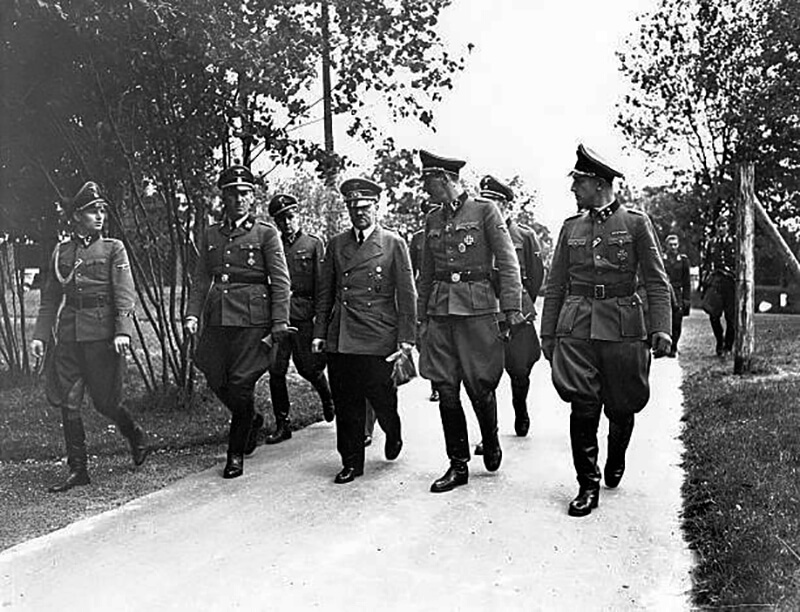
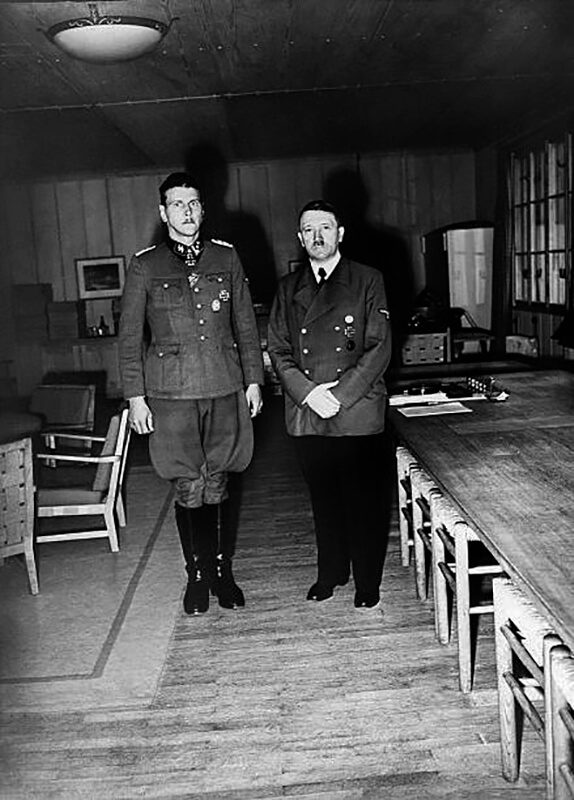
Mussolini’s Rescue
Hitler understands what Skorzeny means, as he is also Austrian. He dismisses the other five Commanding Officers of Special Force units and personally charges Skorzeny with the rescue of Mussolini. Mussolini has been arrested by Italian police in preparation for Italy’s surrender to the Allies and its change of sides. The location of the Duce is unknown, and Hitler does not want the German Army Commander in Italy or the German Ambassador in Rome to know of the operation. Skorzeny and his force are transferred to the Luftwaffe and report directly to General Student. While discussing the situation with General Student, Himmler shows up to dominate the conversation. He gives a short history of Italian vacillation since the Allied invasion of Sicily. This is followed by a monologue with names of (un)reliable Italians and how to deal with each of them.
During a break in the performance, Skorzeny requests to step out. He calls his commandos to put them on alert status. While waiting to have his call put through, he lights a cigarette to think about the assignment. Suddenly, Himmler walks down the hall and chews him out for smoking, declaring him possibly unfit for the job. However, one of Hitler’s staff officers overhears and assures Skorzeny that this is a trait of Himmler, and that General Student will fix everything once the operation gets rolling. While later on the Nazi’s try to paint the operation as a Waffen-SS operation, the operation is planned by Oberleutnant Georg Freiherr von Berlepsch and led by Major Otto-Harald Mors, both of whom were members of the Luftwaffe Fallschirmjäger. Skorzeny is primarily only tasked with the search for Mussolini. That is also where his unit is trained for. But Skorzeny wants more.
Operation Eiche
On September 12th,1943, Skorzeny and sixteen of his troopers join the Fallschirmjäger to rescue Mussolini in a high-risk glider mission. Skorzeny wasn’t planned to go on this mission since his troops were not trained in this kind of operations. He convinces General der Flieger Student, the overall commander of the search and liberation of Mussolini, that he can join the Fallschirmjäger on the mission.
They land their ten DFS 230 gliders on the mountain near the hotel where Mussolini is kept. By accident Skorzeny’s glider is the first to land. Without a single shot fired, the Germans overpower Mussolini’s captors, two hundred well-equipped Carabinieri guards. Skorzeny rushes into the hotel, and after ten minutes, Mussolini leaves the hotel accompanied by the German soldiers. Skorzeny claims Mussolini and together they fly out by a Fieseler Fi 156 STOL plane. He accompanies Mussolini to Germany and visits Hitler at Führer Headquarters in Wolf’s Lair. He becomes the hero of the liberation of Mussolini. The role of the Fallschirmjäger is totally ignored.
Expansion
As a result of this successful mission, Skorzeny is allowed to recruit soldiers from the original German Army Special Force, the Brandenburg Division. These soldiers are highly skilled and qualified for sabotage and preventing vital bridges from being destroyed. However, by 1943, they are being used as gap-stopping cannon fodder in Africa and Eastern Europe due to the German Army being on the defensive or preparing for the next Allied invasion.
In early 1944, Sonderverband z.b.V. Friedenthal is re-designated SS-Jäger-Bataillon 502. Skorzeny, uses his relationship with Hitler to “borrow” supplies and equipment from every depot within reach while training the enlarged command. During this time, there Soviets claim that Skorzeny is involved in planning of Operation Long Jump. This was an alleged plan to assassinate the “Big Three” at the 1943 Tehran Conference. Hitler gave the command to Ernst Kaltenbrunner, who gave the mission to Skorzeny. The Soviets claim to have learned of the plot from counter-espionage activities against German intelligence. However, the British and Americans dismiss the story as Soviet propaganda. Skorzeny himself denies the existence of such a mission in his post-war memoirs. He claims that his name was only used to make the story more believable due to his reputation as an SS commando.
Specialised Operations
Proven however is that he is tasked with the planning of the abduction of other well-known figures who posed potential or actual problems. His first target was Marshal Pétain, the Vichy France Head of State, but the mission is canceled after over a month of waiting.
The next target is Marshal Tito of the Yugoslavian Partisans. Skorzeny dispatches his unit’s intelligence team to locate Tito’s constantly shifting Headquarters in western Bosnia. He sends his Chief of Staff to meet with the German Army Commander in the area to work out last-minute details, but the liaison does not go well. Skorzeny’s intel team reports that the local Army Corps is preparing their own operation against Tito, which would commence on May 25th, 1944. Skorzeny realises that if his team knows about it in advance, so did Tito, and the operation ultimately fails.
Despite this setback, Skorzeny continues to work on special projects, including developing special weapons for sinking ships with the Italian Decima Flottiglia MAS, led by Commander Prince Junio Valerio Borghese. Himmler also orders him to assist in the training of the “K-men” in the Kleinkampfverbånde. During the same period, he works with Luftwaffe Squadron 200 and Hanna Reitsch on piloted V-1 buzz bombs. However, Skorzeny’s efforts are often hindered by bureaucracy, as he is once again asked to train special pilots but could not get any flight fuel for the effort.
Western Front
On June 6th, 1944, the Western Front becomes active with the Allied landings in Normandy. Skorzeny’s unit is put on alert. On July 20th, 1944, while on his way to observe some frogmen exercises in Vienna, word of the attempted assassination of Hitler comes. Skorzeny is pulled off the train at the last station in Berlin and instructed to return to Berlin to deal with a military revolt. Confusion is rampant and rumors are spreading like wildfire.
He is somehow assigned to protect the Headquarters of the Commander-in-Chief, Home Forces. High-ranking officers are committing suicide or being executed in the parking lot. Fear grips the staff at the Headquarters, but Skorzeny takes responsibility and gets all the clerks back to work. His actions raise his standing, and that of his battalion, in the eyes of Himmler and the political leadership. The Military Section D — the Counter-espionage unit — is attached to his command.
Hungary
On September 10th, 1944, Skorzeny receives a call to report to Fuhrer Headquarters at a newly constructed Wolf’s Den in Berlin’s vicinity. After a three-day round of conferences and situation reports, he is briefed on his next mission. With Russian Armies breaking through Hungary’s defenses, the designated Hungarian head of state, Admiral Horthy, has commenced secret negotiations with the Allies for surrender. If successful, it will mean the loss of many German Army Divisions and Austria will become the next battleground.
Multiple German units are to be placed under Skorzeny’s command and he is directed to Budapest to see what can be done to prevent Hungary’s break away from the Axis camp. He is given a document stating that he is on a personal and confidential mission for the Führer, and all political and military authorities are to assist him. It is essentially a Carte Blanche, personally signed by Hitler. The object this time is not to rescue anyone, but to keep Hungary as a functioning Axis partner. Skorzeny sends in his command intel section and starts quietly gathering his forces in and around Budapest. His favorite group is a battalion of cadets from the southern Austria Wiener–Neustadt Kriegsakademie. This may be the first time he realises that he has become a legend.
Operation Panzerfaust
According to intelligence, the son of Admiral Horthy is currently in a meeting with delegates from Tito’s partisan Army, who are also working for Russia. There is another scheduled meeting for the morning of October 15th, 1944. Skorzeny’s team acts with great efficiency and rushes the meeting, while others are fighting the Royal Hungarian Military guards. Within just five minutes, they successfully capture the son of Horthy, wrap him in a carpet, and transport them via truck to the aerodrome, where they are flown across the border to Vienna. At 14:00 that afternoon, a special announcement is made over Hungarian radio stating that “Hungary has concluded a separate peace with Russia!” German forces immediately take up planned positions around the Hungarian Government Citadel in response to this news, as orders for the German response “Operation Panzerfaust” are issued.
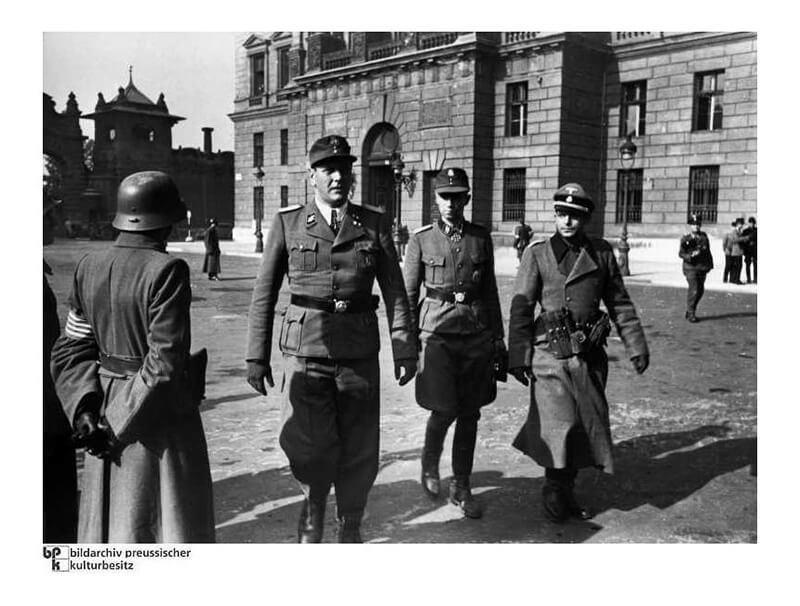
The events that occur that evening and the following morning are reminiscent of a scene from “Mission Impossible.” Skorzeny and his team of highly trained commandos manage to capture the entire Government Complex and Citadel with just a handful of men, taking the necessary steps to ensure that Hungary and its armed forces remain in the fight for the Axis. This action lasts for less than thirty minutes and results in the death of three Hungarian soldiers and four Germans. Hapsburg Archduke Frederick greets Skorzeny after the successful operation.
On October 18th, 1944, Skorzeny, now a SS-Obersturmbannführer, escorts Admiral Horthy to meet with the Führer. Afterward, he immediately returns to Budapest for a joint ceremonial burial service.
Ardennes Offensive
Upon returning to Berlin with his primary commando officers, Skorzeny receives a written order to report to Fuhre Headquarters. During this meeting with Hitler, Skorzeny is informed of the secret plan for December, known as the “Ardennes Offensive.” The objective is to score a success in the West and negotiate an armistice with Britain and the United States, allowing Germany to concentrate its remaining forces to fight against Russia and “save” Europe. Skorzeny’s mission is to capture and hold three essential bridges, while commando teams in captured uniforms create confusion behind Allied lines, all while maintaining strict secrecy. German High Command soon issues an order for English-speaking soldiers to be sent to Skorzeny’s Friedenthal location for “Secret Commando Operations.”
Skorzeny had a tight deadline for Operation Greif during the Ardennes Offensive, with only five to six weeks to recruit and train a new unit. Despite asking for 3,300 men, he was given an immediate go-ahead and promised full support for Panzer Brigade 150 by Generaloberst Alfred Jodl after sending his plans within four days. The Oberkommando der Wehrmacht then issued an order requesting soldiers with knowledge of the English language and American dialect, which was soon known to the Allies.
Preperations
To outfit the new brigade, OB West was asked to find and deliver fifteen tanks, twenty armored cars, twenty self-propelled guns, one hundred jeeps, forty motorcycles, and 120 trucks, as well as British and U.S. Army uniforms to the training camp at Grafenwöhr in eastern Bavaria. However, the equipment delivered fell short of the requirements, including only two Sherman tanks in poor condition. As a result, Skorzeny had to use German substitutes, including five Panzer V “Panther” tanks and six armored cars. Furthermore, the brigade was also flooded with Polish and Russian equipment from units who did not understand the request’s purpose.
Adding to the challenges, Skorzeny had only ten men who spoke perfect English with knowledge of U.S. idioms. Another 30-40 spoke English well but lacked knowledge of slang, while 120-150 spoke English moderately well. However, most of his men spoke little to no English.
After several delays, Skorzeny receives a series of final briefings at the Wolf’s Den. At some point, Hitler personally prohibits Skorzeny from going behind enemy lines, which devastates him. He is directed to coordinate the action by radio and remain at the 6. SS-Panzer-Armee battle headquarters, while his commando teams operate in the battle area of the SS-Panzer Regiment 1 “LSSAH” under SS-Oberführer Joachim Peiper.
Operation Greif
The attack, also known as the Battle of the Bulge, begins on Saturday, December 16th, 1944, at 05:00. The primary objective of Skorzeny’s battalion-sized “brigade” is to capture and secure three bridges across the River Meuse, allowing the Panzer Divisions to stream into Holland on their second day of the attack. When the German forces fail to meet their first-day goals, Skorzeny realises that reaching the Meuse is unlikely. Consequently, his “brigade” is used as a regular infantry unit.
However, he has sent half a dozen teams of English-speaking commandos in American uniforms. Their task is to create confusion by changing or removing road signs and cutting phone lines between American front-line units. A rumour gets out that Germans dressed like G.I.s are everywhere. The rumour takes on a life of its own and a couple of hundred soldiers are arrested behind the lines, roughed-up to get information, and left in jail for a week or more.
Consequences
General Bradley is stopped numerous times by over-zealous MPs while trying to visit his front lines. General Montgomery cannot get through to discuss the situation with his American counterparts. In Paris, Eisenhower becomes a virtual prisoner of his own Intel and Military police for five critical days of the battle. An officer resembling Ike is dressed up and driven around Paris trying to trick “Kraut Commandos” into making their move. The rumors’ results would haunt Skorzeny for decades.
The Battle of the Bulge ends in German defeat. It is supposed to impress the Allies of the German Army’s viability and hopefully lead to negotiations about a separate peace treaty on the Western Front. It is the last straw for any German commando action. The remaining German forces are thrown into the losing battles usually in the East.
The last actions of World War 2
In February 1945, Skorzeny acts as a SS-Gruppenführer und Generalleutnant der Waffen-SS and commands around 5,000 troops. This unit includes his SS commandos and paratroopers. They are tasked with defending the Schwedt Bridgehead on the River Oder. On March 17th, 1944, he receives orders to sabotage the last remaining intact bridge across the Rhine at Remagen after the Allies captured it. However, the bridge collapses on the same day. Naval demolitions squad unsuccessfully attack a nearby Allied pontoon bridge between Kripp and Linz instead. For his actions, Hitler awards Skorzeny one of Germany’s highest military honours, the Oak Leaves to the Knight’s Cross.
Emprisonement
After the war ended, Sokorzeny is arrested in Salzburg, Austria on May 15th, 1945. In December 1945, to cover faulty intel about Skorzeny’s activities, the U.S. Army circulates a “Wanted Poster” describing him as a “Saboteur, Spy, Assassin”. He is described as the “The Most Dangerous Man in Europe.” He is trialed in Nuremberg by the “Hanging Judge”. However, he is saved by the testimony of a British Special Operations Officer. The man states that everything Skorzeny is charged with (in violation of the pre-WWI “Rules of War”) has been done by Allied commando teams against the German Army.
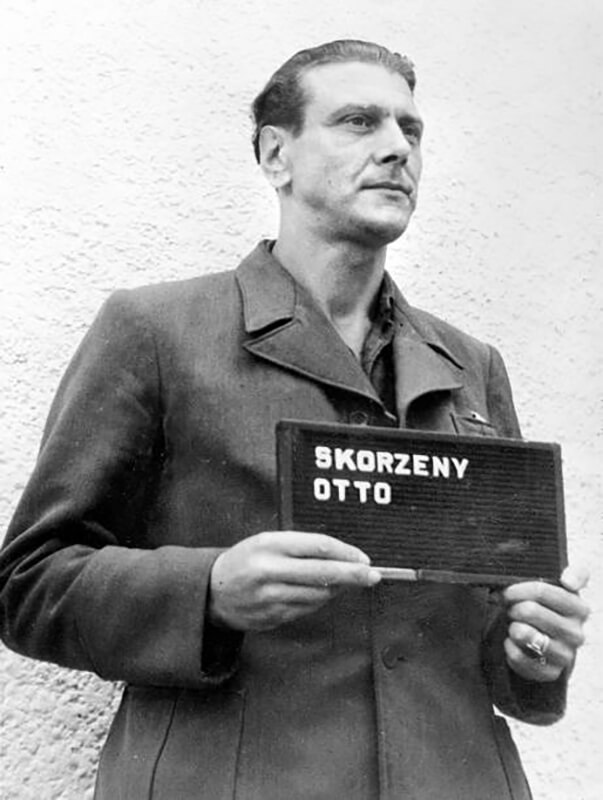
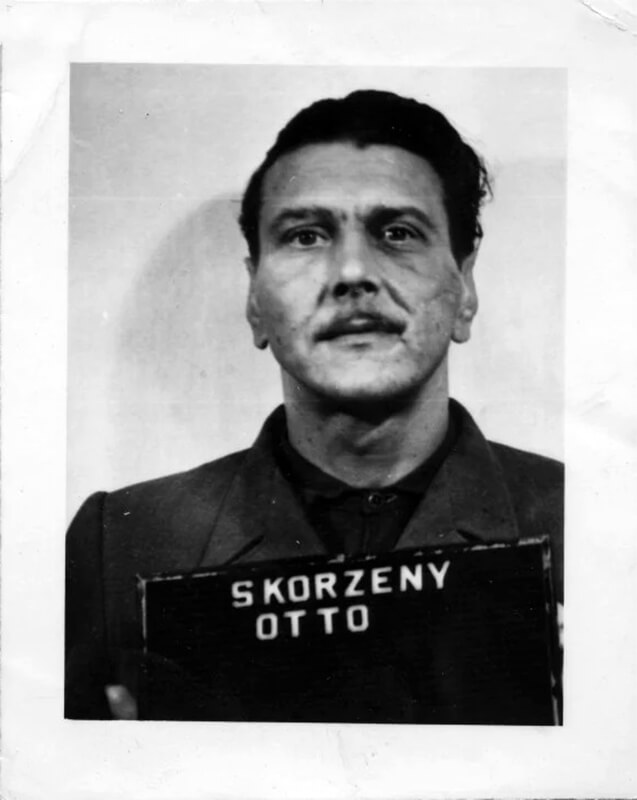
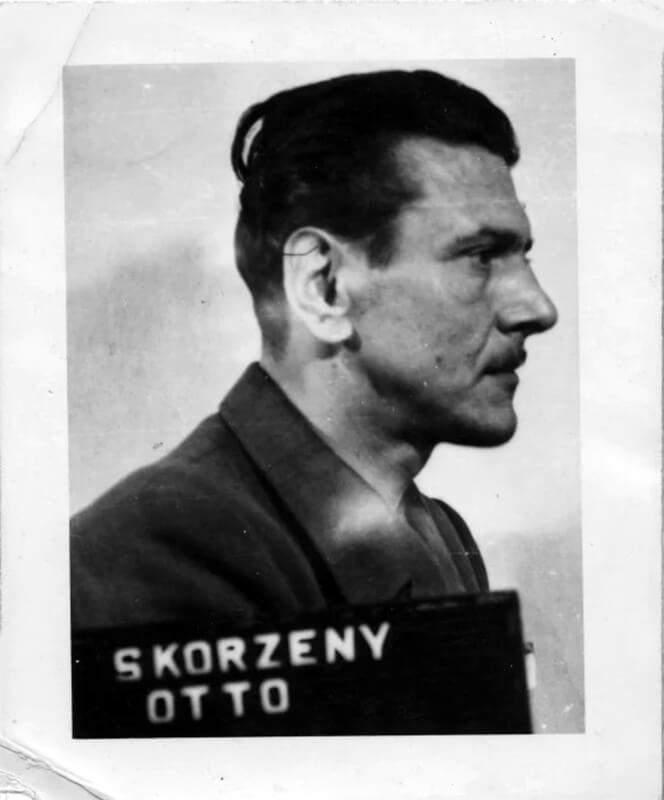
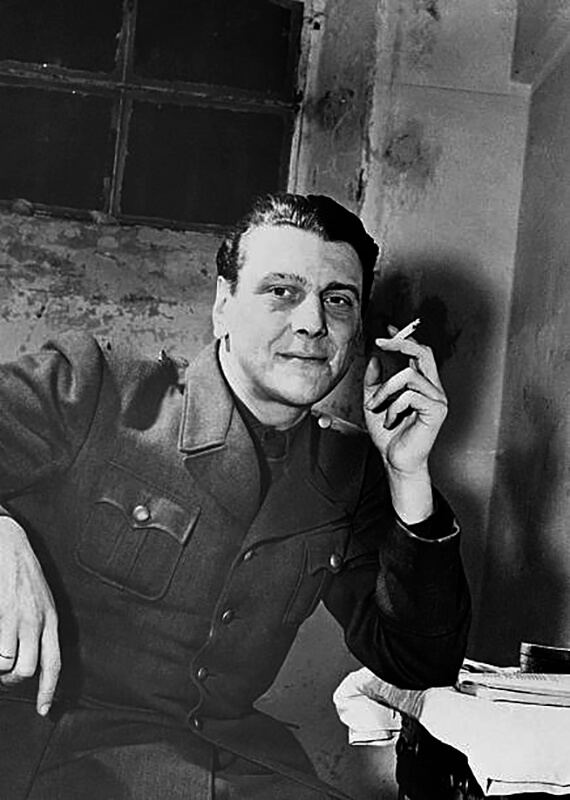
Skorzeny is detained in an internment camp at Darmstadt while awaiting the decision of a denazification court. On July 27th, 1948, he escapes with the assistance of three former SS officers dressed in US Military Police uniforms. They claim they have orders to take Skorzeny to Nuremberg for a legal hearing. Skorzeny later claims that the US authorities aided his escape and supplied the uniforms.
Free man again
Skorzeny then goes into hiding at a farm in Bavaria, which is rented by Countess Ilse Lüthje. Lüthje is the niece of Hjalmar Schacht (Hitler’s former finance minister). He stays there for around 18 months, during which time he is in contact with Reinhard Gehlen. Together with Hartmann Lauterbacher (former deputy head of the Hitler Youth), they recruit people for the Gehlen Organisation. On February 13th, 1950, Skorzeny is photographed at a café on the Champs Elysées in Paris. The photo appears in the French press the next day. As a result, he moves to Salzburg, where he meets with German veterans. During that same period, he files for divorce so that he can marry Ilse Lüthje.
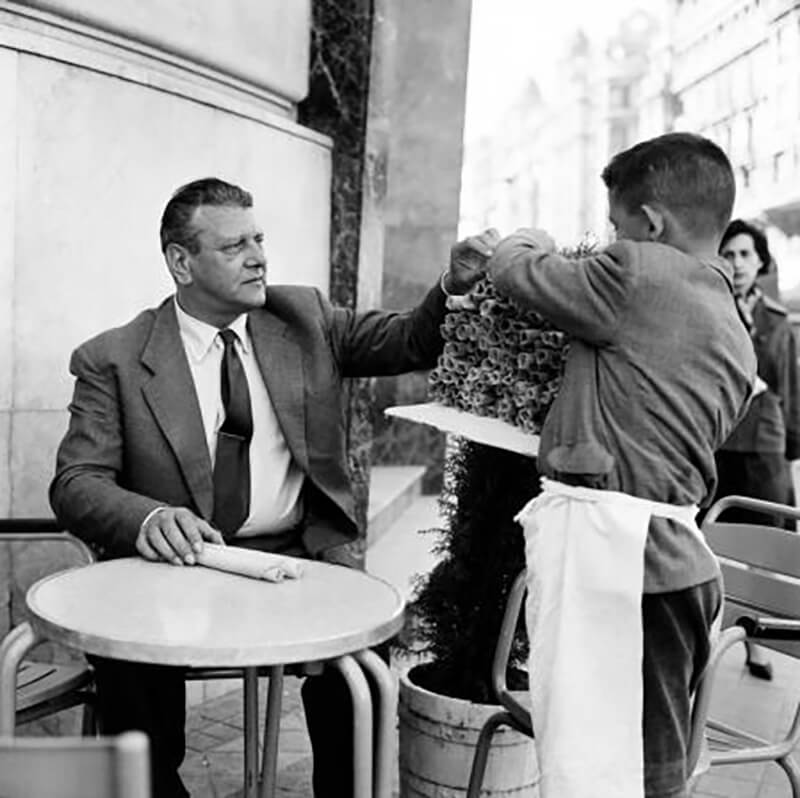
With the help of a Nansen passport issued by the Spanish government, Skorzeny moves to Madrid. Shortly afterwards he sets up a small engineering business. In April 1950, Skorzeny’s memoirs is published by the French newspaper Le Figaro. This causes 1,500 communists to riot outside the newspaper’s headquarters.
In 1952, Skorzeny is declared denazified in absentia by a West German government arbitration board, along with thousands of other former Nazis. This ruling allows him to travel from Spain to other Western countries using a special Nansen passport for stateless persons.
Egypt and Argentina
In 1952, General Mohammed Naguib takes over Egypt. The following year, former General Reinhard Gehlen, now working indirectly for the CIA, sends Skorzeny to Egypt to act as Naguib’s military adviser. Skorzeny recruits a staff of former SS and Wehrmacht officers to train the Egyptian army. They include Wilhelm Fahrmbacher and Oskar Munzel, former Wehrmacht generals. Leopold Gleim, the head of the Gestapo Department for Jewish Affairs in occupied Poland and Joachim Daemling, former chief of the Gestapo in Düsseldorf. Skorzeny also trains Arab volunteers in commando tactics. These include several Palestinian refugees who receive training for possible use against British troops stationed in the Suez Canal zone. Yasser Arafat is among these Palestinians. After this, Skorzeny stays on to serve as an adviser to Egyptian President Gamal Abdel Nasser.
Skorzeny is rumored to have acted as an advisor to President Juan Perón in Argentina. During that same period, he a bodyguard for Evita Perón while fostering an ambition for the “Fourth Reich” to be centered in Latin America. Some authors claim that he traveled between Spain and Argentina.
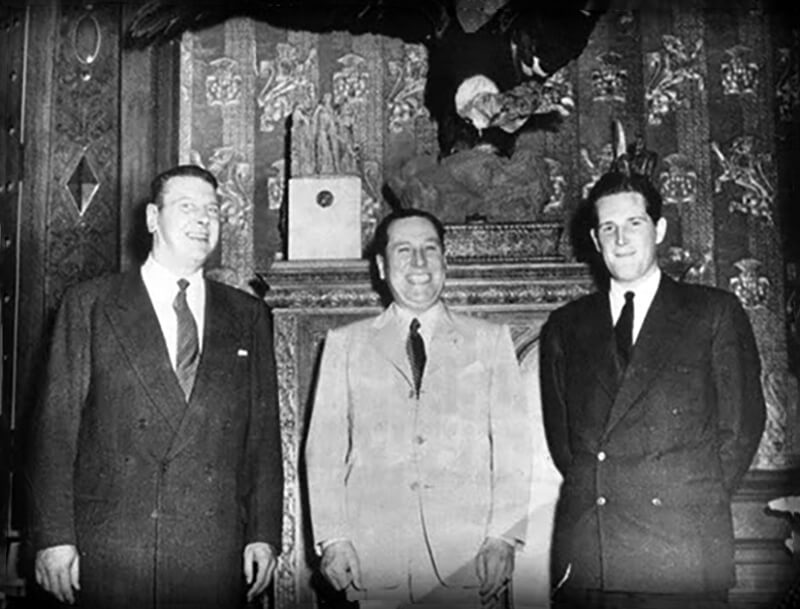
He visits Ireland twice in 1957 and 1958. However, he is only able to stay for up to six weeks at a time, as the Irish government refuses to grant him a residency visa and monitored his movements closely. Skorzeny purchases Martinstown House, a farm in County Kildare, Ireland, in 1959. However, he rarely visits the place after 1963 and sells the property in 1971. Despite being easily recognisable due to his height, weight, and scar, Skorzeny keeps to himself and is not friendly with the locals. He also owns property in Majorca.
Back to the Old Trade
During the 1960’s, Skorzeny founds the Paladin Group near Alicante, Spain. He envisions it as an “international directorship of strategic assault personnel” that could carry out both paramilitary operations and political warfare conducted by civilian agents. The Paladin Group specialised in arming and training guerrillas. Some of its operatives are later recruited by the Spanish Interior Ministry to fight against the separatist group ETA. Skorzeny also plays a founding and advisory role in the Spanish neo-Nazi group CEDADE, which was established in 1966.
There are rumors that Skorzeny, operating under the cover names Robert Steinbacher and Otto Steinbauer, establishes a secret organization called Die Spinne. This organisation, also known as Odessa, allegedly helped as many as 600 former SS men escape from Germany to Spain, Argentina, and other countries. Some sources suggest that Nazi funds or Austrian intelligence support the organisation. Over the years, Skorzeny, Gehlen, and their collaborators supposedly gain significant influence in Europe and Latin America.
Otto Skorzeny dies of lung cancer in Madrid, Spain, in 1975. Despite his controversial past, Skorzeny remains a figure of interest to military historians and enthusiasts, who continue to study and analyse his innovative tactics and daring operations. His legacy as one of the most effective special forces operatives of World War II is secure, even if his reputation is forever tainted by his association with the Nazi regime.
| Multimedia |
| Operation Eiche |
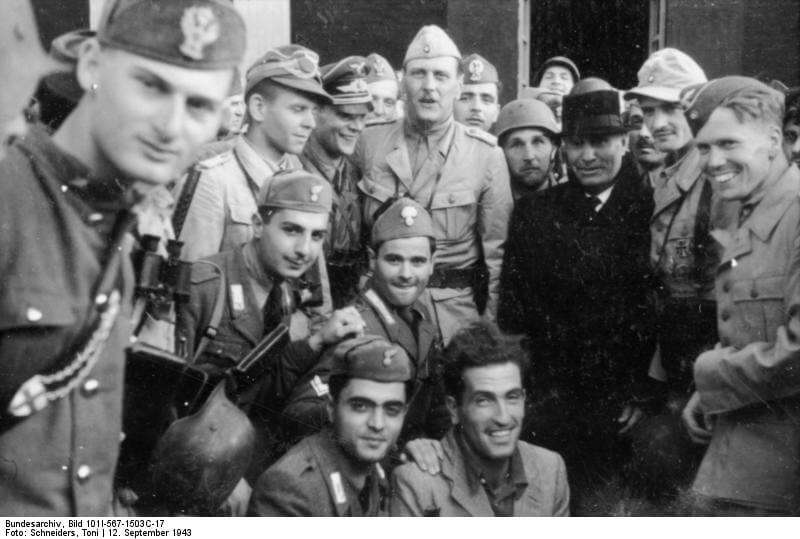
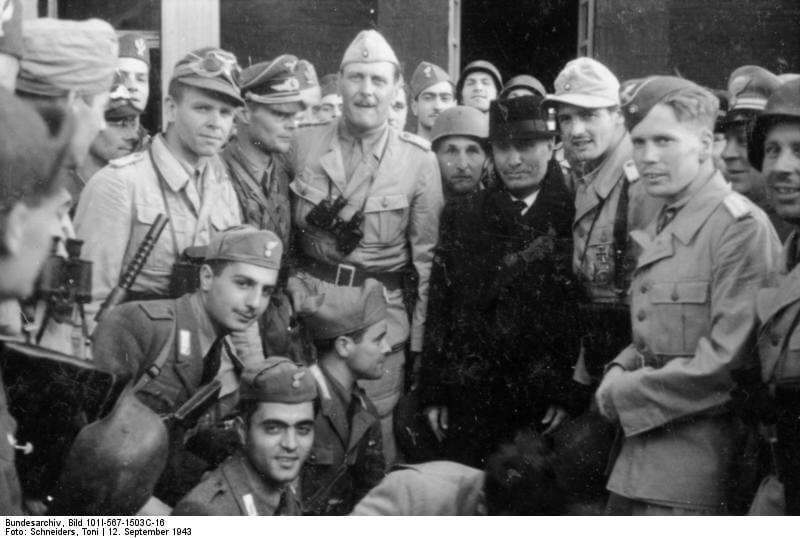
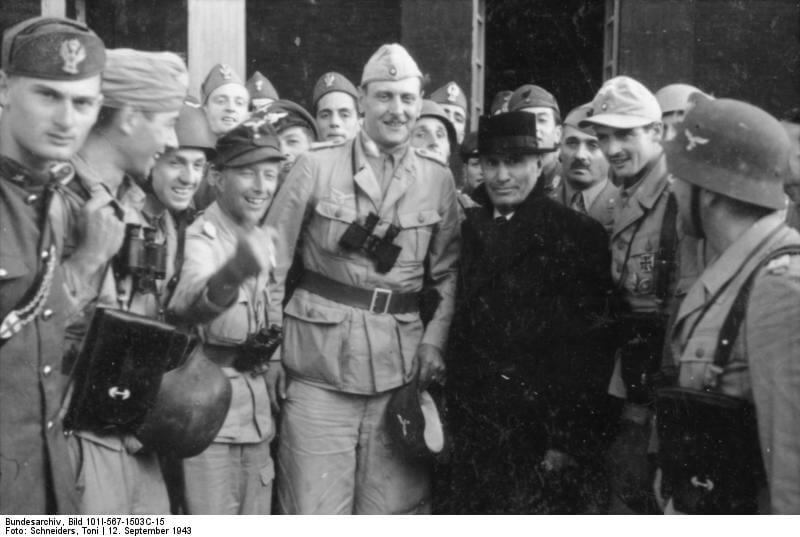
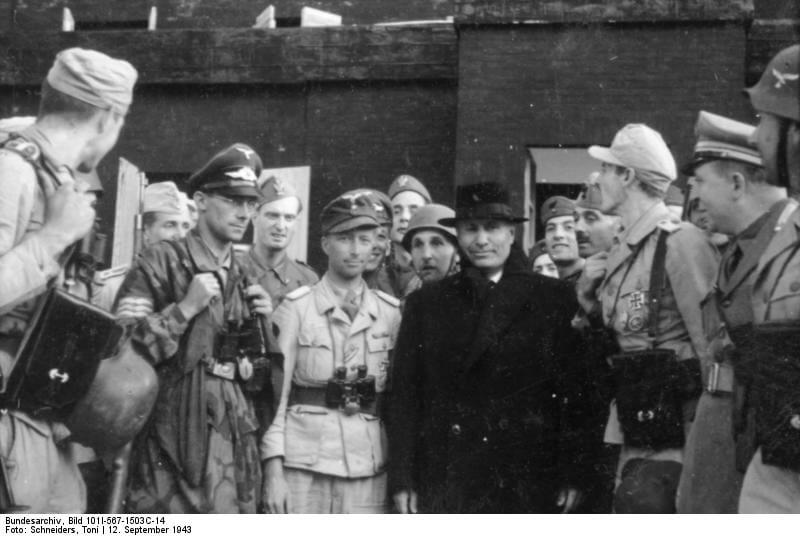
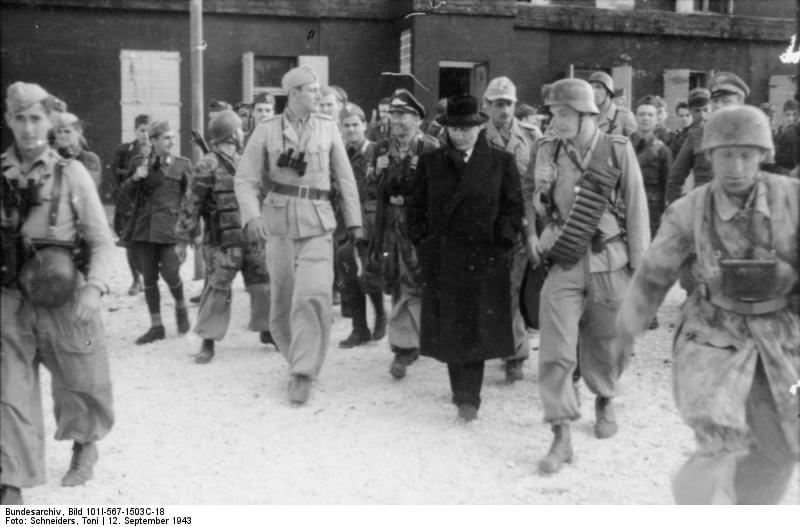
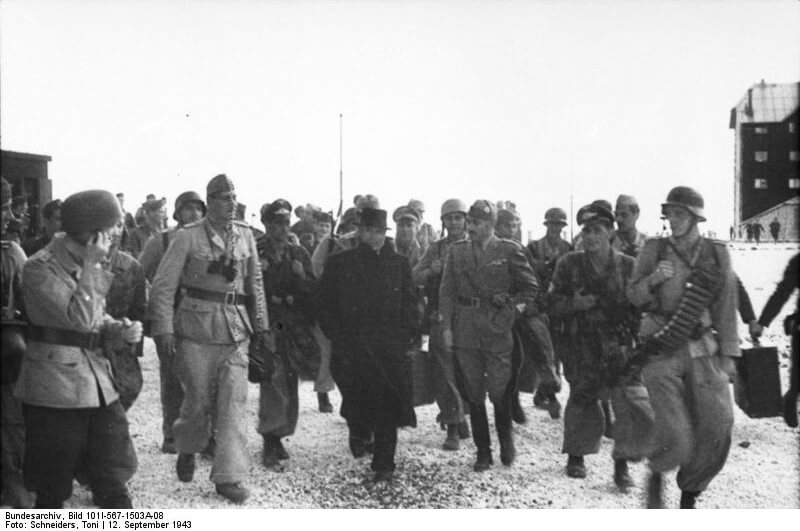
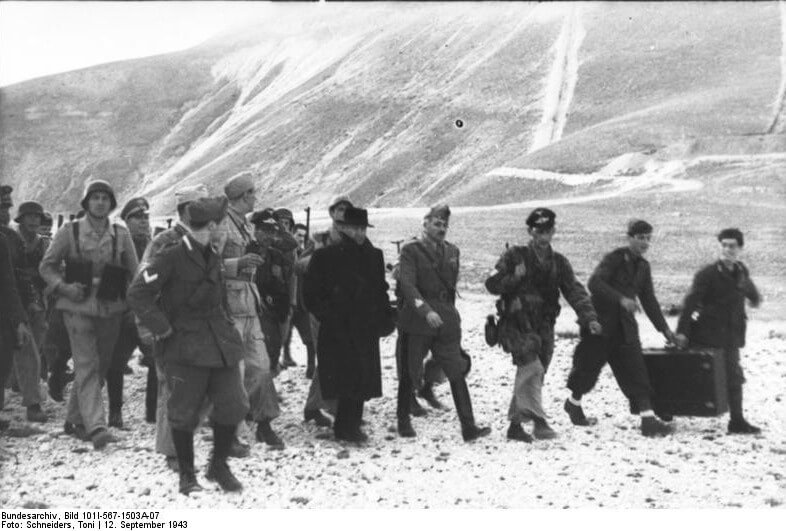
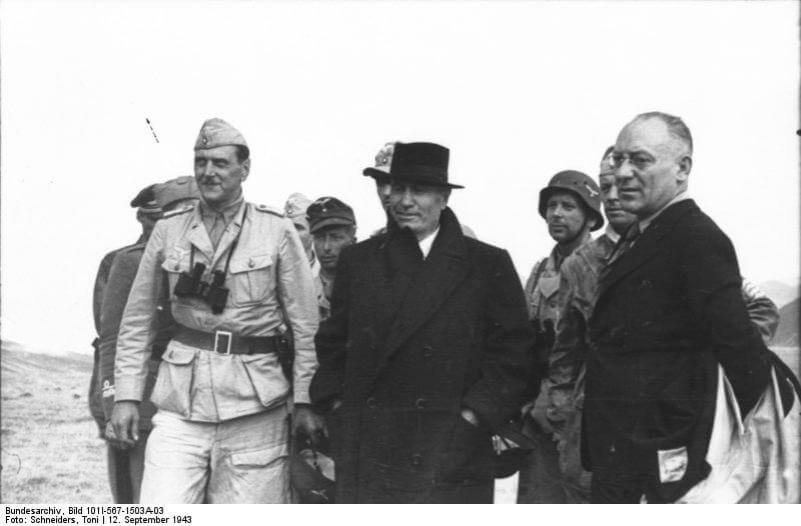
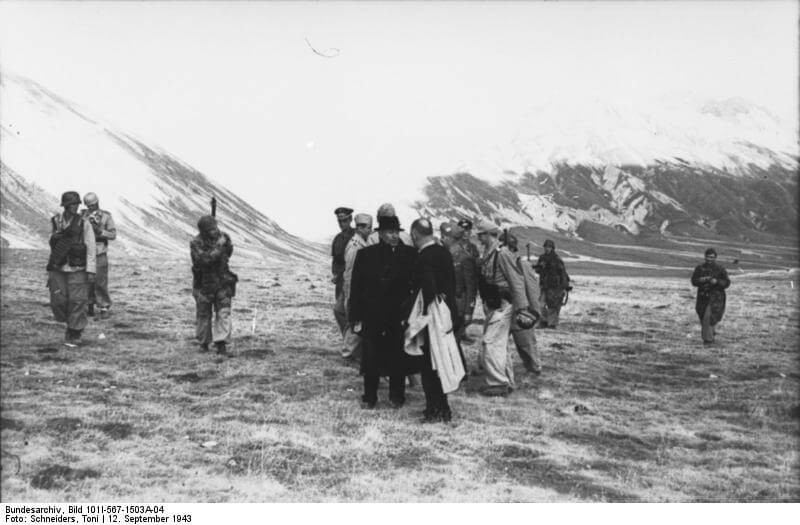
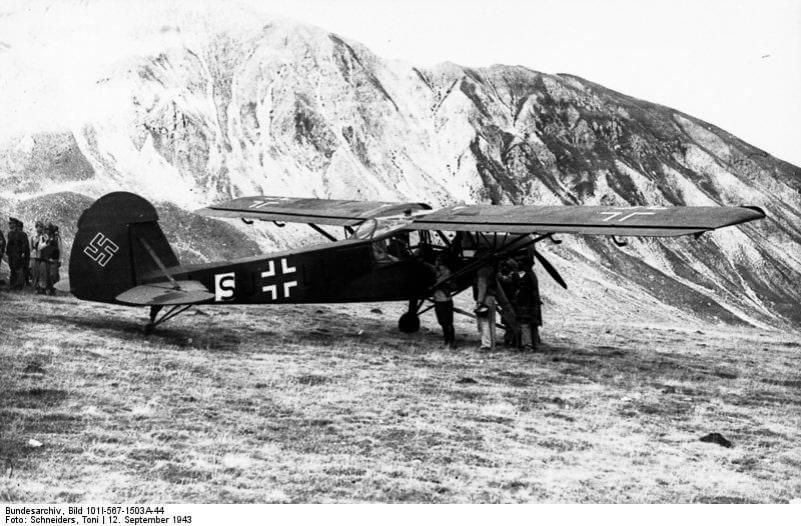
| Mussolini meets Hitler after Operation Eiche. |

